Job hunting is a selling process. Those who embrace this job search truism shorten their job search.
There are two basic selling processes:
- Transactional
- Solution-based
In transactional selling, the salesperson has limited options. Basically, they’re offering an inventory of products from a catalogue and negotiating a price (usually based on volume), payment, and delivery. Solution-based selling is more complicated. In a solution-based selling scenario the seller focuses on a specific issue or problem the customer faces and suggests corresponding services or products to solve that issue and customizes their offering accordingly.
Applying to a job posting, or a job opportunity you uncovered through networking, is comparable to solution-based selling. Keep this in mind as you write the second paragraph of your cover letter.
After telling the reader, in the opening paragraph of your cover letter, you’re the ideal candidate for the job, you must prove it; otherwise, your first paragraph was just your opinion. As I’ve mentioned in an earlier column, employers don’t hire opinions; they hire results.
The second paragraph is your sales pitch. Here’s where you show the hiring manager you’re a good fit for the position. This is done by choosing 3 – 6 experiences/skills/traits that connect your accomplishments with the job posting’s job requirements. Remember, numbers and metrics are essential to making your “sales pitch” persuasive.
Here’s an example:
For the past 8 years, I’ve managed Bravo Pizza’s Western Canada sales territory. I increased sales by 260% during that time, averaging $48,000 in sales every day, translating into approximately 12,000 pizzas/daily. This achievement required my making daily cold calls to sign on over 345 new grocery stores to carry Bravo Pizza’s line of frozen pizzas. I also implemented retargeting sales campaigns using Facebook Pixel and other data tracking technologies. As well, I created 10+ cold email templates that were adopted as a company standard. The bottom line is this: I’m able to hit the ground running and becoming a part of increasing Pumpkin Desserts’ revenue.
While this paragraph will do the job personally, I prefer bullet points. Using bullet points would redesign the above example to read as follows:
In reference to your requirements outlined in the Marketing Analyst job ad description, I can offer Pumpkin Desserts:
- Over 8 years of sales territory management for Bravo Pizza, a nationwide frozen food company.
- Increased sales from $6.8 million annually to $17.8, a 260% increase. ($48,000 in daily sales, which is approx. 12,000 pizzas)
- Implemented retargeting sales campaigns using Facebook Pixel and other data tracking technologies.
- Created 10+ cold email templates that are now used company wide.
The bottom line is this: I’m able to hit the ground running and become a part of increasing Pumpkin Desserts’ revenue.
Which example is more readable (skimmable)? Bullets direct the reader to important information, information that can persuade them to read your resume, and that you might be worth their time to interview.
Don’t restate everything that’s on your resume. Cherry-pick experiences that make you a good fit for the position — make connections between what the employer is looking for and what you have to offer.
Last week, I suggested you create a list of 5 – 6 quantified reasons (the more, the better) why an employer should hire you. Such a list will make it easy to fill in the bullet points to customize your cover letter. Hence, your achievements will be relevant to the position.
What makes me especially fond of using bullet points is its flexibility to add additional experiences/skills/traits without creating an overly enormous awkward paragraph. Appropriate additions will further increase your odds of your resume being read and receiving a call for an interview.
For example, could add one of the following:
- McMaster University (DeGroote School of Business) — Bachelor of Commerce (2008).
- Sit on the Canada Food Council Advisory board since 2016.
- Fluently bilingual. (English, French)
- Local Toastmasters (The North Toastmasters, Toronto, ON) club officer since 2013.
- University of Waterloo — Sales and Marketing Fundamentals Certificate (2015).
To keep your cover letter concise, don’t exceed 6 bullet points.
Next week’s column will discuss writing the third paragraph of your cover letter, a call to action. A call to action is an intricate part of the selling process.






